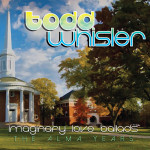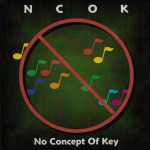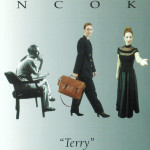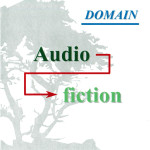Album Notes – To Be A Star
To Be A Star – recorded September 2001 – May 2005.
How do you write the best album of your life? Mine began when the fourteen year old daughter of a coworker asks you to put one of her poems to music. My friend Jeanie’s daughter Sarah had been writing lyrics all summer long (and watching way too much “Behind The Music” specials on VH1). She had heard some of my work and wished for me to take one of her poems and set it to music. I readily agreed. I suppose I could have just driven over to their house after it was done and played and sang it for her but I wanted her to have something tangible – a version of the song she could listen to and appreciate whenever she wanted. So I booked 3 days of studio time and recorded it properly with live drums and bass and some searing lead guitar courtesy of Mr. Doug Floyd. Given that I was in the studio, I also grabbed two songs that I had taken as far as I could with my own 4 track recorder and lousy singing. Unfortunately, the music I wrote and that Jim, Doug and I arranged didn’t fit Sarah’s original lyric so we recorded it as an instrumental. To appease Sarah, I grabbed my acoustic, went into the vocal booth and played and sang the song in a single take using her original words.
That song would morph into Death Of Radio later and the two other songs were Mr. Needlenose and Because I Love You. I sent copies of the three nascent tracks with only guide vocals off to two of my friends Susan and Don. They both responded that this was some of the strongest material they’d heard from me. I went back to the studio for some reason or another and Jim mentioned he had taken that three song demo with him on a vacation and he’d listened to it fairly much nonstop just because he really liked it. I began to think that something was happening here, I was in possession of much stronger music than I had realized. So I booked a week in June of 2002 and prepared another 5 songs for recording (Omnipresent, Ignorance And Arrogance, Cacophonous Sonic Assault, Where’s Jennifer and Inner Corners), hoping lightning would strike twice. Right before that Monday, I wrote a 6th song (My Old Addiction) and while we were in session I wrote a 7th track (The Last Time). Jim and I recorded drums and rhythm guitars for all seven songs. Unfortunately only 3 ended up making the cut but it was enough for Leyth to realize a statement was indeed in process. As always, not one of the 6 tracks that made the cut was a suitable opening or closing track. However, I was prepared for this and had 3 other songs that were in the very early stages of development ready to play and sing for him. The last of the 3 was To Be A Star. “I don’t like what you’re doing musically,” Leyth said slowly and carefully so as not to offend me, “but that song can both start and end your album. You can have To Be A Star, Part I and To Be A Star, Part II.” Great, I thought. Concept album! I drove home from his house and split my original lyrics into two halves – the first contained the more optimistic and hopeful thoughts on stardom while the second was more cynical, bitter and disillusioned. I emailed the lyrics to Leyth who had the music ready by the next weekend.
Unfortunately, 2002 turned out to be an expensive year for me and I found my savings depleted by October. I therefore put a halt to the album. Also, I began getting exposed to some fantastic new bands who were writing music much superior to my own and given that the general nature of the album seemed to be how awful stardom in particular was and the music business in general was, why was I going to go to the trouble of recording this sour grapes album? I settled for just listening to what we had recorded and found it was surprisingly satisfying. At least for a time. The truth is once you start down a creative path like this and the vision appears or you have the goal in mind, it’s impossible to stop – not to realize it. After a time my savings recouped and in late 2003 work resumed. I try to apply lessons learned from these albums and I learned some things from No Concept Of Key. First, although it’s good to allow musicians freedom to play the parts the way the feel and to rewrite lyrics, I am responsible for the overall direction of each song and I had been too hands off in 1999 and 2000. Secondly, as much as I admire and appreciate Tony Kishman’s singing, I needed a different voice. Lastly, I had to spend more time of vocal melody. All the criticism I had received revolved around a single repetitive theme – no one like the lyrics and no one like the singing. I therefore paid a lot more attention to what ought to be sung over these new tracks.
Finding the new voice was surprisingly easy – both Jim and Vicki Tama (who rehearsed the material with me and recorded guide vocals) recommended Tommy Quatraro, a local singer who subbed for the local bands whenever their lead singer wasn’t available and acquitted himself with distinction. Tommy stopped by the studio one night while I was recording a simply horrible guide vocal for When You’re A Star. In spite of the fact that he was there ostensibly as a potential vocalist, we never had him sing. Instead, we just hung out, cracked jokes and played Rush songs on our acoustics. Tommy was my age (born a week later) and had clearly grown up listening to a lot of the same music. Vocal ability aside, he was a lot of fun to hang out with. It was purely a bonus that he turned out to be the answer as a singer.
(Jeanie told me later how she had surprised Sarah by playing her the acoustic version of her song in the car as she drove Sarah home from one post school activity or another. Sarah’s eyes grew wide. “Those are my words!” she cried. “That’s my song!” Mission accomplished).
- To Be a Star. A most unlikely, mellow, acoustic opening track. My version was much longer and suffered from my inability to decide whether it should be electric or acoustic. It took Leyth to realize my meandering mess was really two separate songs masquerading as one. Leyth always has this uncanny ability to figure out what it is that I am trying to do even when I don’t know it myself. Although the chorus uses the same chords as The House of the Rising Sun (A minor, C major, D minor, E major), it doesn’t sound or feel like it. Tommy’s opening line is actually not what he sang originally – it is from the snippet after the first chorus; copied and pasted without the vocal harmony. He just sang it with so much more conviction in that take. I also love how Jim’s drums creep into the song in the second verse. I remember going over to Tommy’s house to rehearse this song, I think this was the fourth song he recorded and being impressed by his interpretation, so downbeat and restrained. I know he takes pride in his middle and upper registers of his voice but I actually like his singing more when it is held back like this one is.
- Death of Radio. The second song is a tour de force, probably one of the factors that makes this the most popular of my albums with my friends. It’s an aggressive rock song with a powerhouse lead vocal (half of which is from Tommy’s original audition session). When Tommy started singing this song, Jim and I exchanged smiles as we knew we’d found the voice we needed. Although I knew what the chords were, I had no idea how to approach arranging the song, the chorus in particular so Doug Floyd, Jim and I all set up in the live room and played it out. I never would have written such a restrained guitar part where I’m basically just finger picking root notes and the drums drive the whole section. The ending guitar solo from Doug is from his very first session and was completely unscripted and unrehearsed. I’m very pleased we were able to preserve it. Rich’s keyboard part took inspiration from Journey’s Separate Ways (Worlds Apart) “I want to drench the song in a big keyboard part,” Rich explained. It sure worked for me. Even I threw a little improvisation into the second verse. There’s an excitement to playing when you’re all on the same page but you’re not exactly sure where you’re going and this song I think reflects that energy and excitement.
- Ignorance and Arrogance. This song was originally explicit criticism of my high school friend Clint and some decisions he’d made. It stemmed from my anger over his reaction to No Concept Of Key an album he had labeled “a joke.” I lashed back in anger. Fortunately, I took it San Diego and played it for my parents who were horrified at the character assassination and defamation and advised me not to pursue it. I took a long walk and rewrote the entire lyric in my head. I kept only the chorus from the original version. The music happened while I was trying to replicate Simon and Garfunkel’s version of Scarborough Fair. Thankfully, I did a terrible job and stumbled onto something uniquely my own. While mixing the midsection (“I took stock of your life’s story – and all the things that we’ve been through”), I kept asking Jim to lower the lead vocal. He looked at me and said, “It’s getting to where you can’t really hear it.” My smile told him that was exactly the effect I sought.
- Letting Go. This was the last song written for the album. Before Leyth drove down to Tucson in order to record his lead guitar parts, I decided to descope the track Where’s Jennifer from the album. “Great,” said Leyth without hesitation, “now we can write the instrumental your album needs.” He assembled this track in about 10 minutes and incorporated the one change from Where’s Jennifer that he liked. On an album that says goodbye to the music industry (but not to music), letting go of the dream is a key concept. Originally, this track was to come out of The Last Time and Rich was requested to compose a musical transition from the one song to the next. Once Leyth heard what Rich composed and recorded, he realized it provided an even better segue out of Ignorance And Arrogance.
- The Last Time. Back in June of 2002 when we recorded the five songs to compliment the first three that had been recorded the previous September, I knew I needed an opening track. After spending all day Monday recording scratch tracks and drums, the lack of a suitable first song was weighing on my subconscious and I awoke Tuesday morning with an idea – this was the last time I would do something like this (famous last words). I assembled a rough draft of the lyrics and emailed them to the studio. After Jim was done recording his drums, he, Vicki Tama and I began brainstorming. The song didn’t really start working until I began to give up on the chorus and Vicki insisted we keep the chorus, singing “This is the last time” in 6/8 time (the rest of the song was firmly 4/4). Somehow that registered and the chorus occurred to me. And then we had a song. We ran Barry’s bass through a vocal pre-amplifier to give it some more punch. It’s not the strongest or best song on the album, but it gets us out of Letting Go and gets us into Needlenose. An album needs songs like that.
- Mr. Needlenose. Back in 1997, I wrote the lyrics to five potential songs; lyrics that I had always intended to set to music but just never found the time. Over Christmas vacation, I had idle time and thought I’d give it a go. The five poems included one song about sex (more on that in a minute), one about rock and roll (The Boys In The Band) and one song about drugs. Needlenose. Needle in reference to heroin and nose in reference to cocaine. The original lyric had no rhyme scheme and no beat (when I wrote it, I was clearly tired). So I chose an off time signature – 7/4 time. The song as originally written had a generic opening, no verse, a decent bridge, a good chorus and a strong midsection. After rewriting the verse, I had a song. This was the song Tommy used to audition as singer for the album. His vocal was only half successful and when I sent it to Leyth, he responded, “Tommy is singing the wrong thing.” I removed half the words in each verse (used to be “Hey Mr. Needlenose, life is never fair/What you must be thinking in that vacant stare/Wounded in your hunger, running from despair/Can’t you tell the difference or don’t you care?” became “Hey, Mr. Needlenose, running from despair/Wounded in your hunger/Tell me, why should I care?”). Less was more. For the midsection, I couldn’t decide if I wanted singing (my demo had singing), talking (a little paragraph that Vicki and I concocted) or lead guitar. We recorded all three and I decided I liked the claustrophobic chaos that resulted.
- Because I Love You. This was the other song written in 1997 about the rock and roll lifestyle. Its subject is sex. Interestingly, unlike the other songs I write where it is clearly from a man’s perspective, Because I Love You is written from and sung from the perspective of a woman – the groupie who gives herself physically to her rock and roll idol for whom she is just another girl in just another city. When I’m putting lyrics to music, I look for clues in the words to tell me how to approach it compositionally. This song told me in the first line what my beat was – waltz time. There was originally an entirely different midsection that had music I wasn’t wild about. I played Leyth what I had written and asked him where the song should go and he began calling out chords. “G minor, F major, A minor…” it’s like the chords come to him out of thin air. And they all worked. Once I heard his music, I completely rewrote the words to match the dark intensity of the music. This song underwent many lyrical changes and as a result, I’m not sure there’s a cohesive or coherent narrative perspective – sometimes the groupie is singing to her idol, sometimes he is singing to her.
- Omnipresent. If you can believe it, as I wrote and rehearsed this song, I had no idea how much it resembled Led Zeppelin’s classic Kashmir. Fortunately, the song finds many other places to go besides the obvious ascending theme in D and stands on its own. Back in Christmas 2000 I set a third poem to music, a song entitled It’s You. The song didn’t really work well enough to record so I grabbed the two best musical ideas and incorporated them into this instrumental. The title refers to the omnipresence of music in all of our lives. The musical reference to Led Zeppelin is obvious but the song is littered with other more subtle tributes to other bands who influenced me. I asked Leyth to solo over the entire song but it was only the opening frenetic verses in B minor that registered with him. He played over later sections but not with conviction. However, he still had good melodic ideas that he failed to execute correctly so I gave Doug a mix with his solos and asked Doug to learn them and record them properly which he did seamlessly.
- Inner Corners. Clear back when I started assembling these songs, I had sense of finality to this album. As such, I wanted to pick a song back from my earliest days of writing and given that Ignorance And Arrogance said goodbye to a high school friend (or so I thought), I didn’t want my other high school friend Don to think it was about him. So I picked this song that I’d written about our friendship clear back in 1985. Don had been my closest friend and confidant when I had lived in Bellevue but now that I was entering my third year away from him, we were growing apart. This song was my promise to him to remain open to him, to share my deepest thoughts, strongest fears and greatest joy. To keep his access to the innermost regions of my mind in place. 30 years later, I can say with confidence the promise has been kept. There is something so powerful in its confessional honesty, a purity of sentiment that I did not want to change a single word of it. However, while it was on solid ground lyrically, musically it needed help. I was in denial until Barry attempted to forge a bass line and could not – settling instead for playing root notes. Barry never plays root notes and I knew something was wrong. I think I’d known all along something was wrong but denied it and hoped the other musicians could bail me out. However, they could not. Thankfully, that night I rewrote nearly the entire song. The musical ideas were coming to me as quickly as I could play them. I recorded the whole song before Barry joined us and in fact I felt strongly that there was a drum part required. Jim had already disassembled his kit and quickly constructed a stripped down, simple kit for recording that he only told me 9 years later resulted in one of his favorite drum parts ever. Once Tommy heard the new music and arrangement, he could not wait to sing it. Fun times indeed. Good memories. It’s always a struggle to me to pick my “favorite” song off this album but this is certainly in contention.
- When You’re A Star. This was the second half of To Be A Star, the one that talked about what happens after success is attained and music becomes a job rather than a passion. When Leyth and I rehearsed this originally, we just stuck to the E major to F major chord change that was so prevalent in To Be A Star. As I rehearsed it, however, I felt it could be elaborated on more. I went back to my original version of the song and transposed my original verse into the key of E. If Leyth objected to my rewrite, he never said anything. I don’t remember why we had Tommy sing harmony over the entire song – I just remember it worked better with the 2nd and even 3rd At the end of the song, we hear snippets from four of the previous songs. That’s how you say goodbye to your dreams. Or so I thought at the time.
- Where’s Jennifer. This song was inspired by my friend Jennifer who complained that she wished her parents had named her differently. I asked why, I’ve always like that name. She responded it was just too common, someone would say, “Hey Jennifer” and five to ten girls would turn around to respond. This somehow led me to a daydream about meeting Ms. Right but only getting her first name and then being faced with the insurmountable task of figuring out which Jennifer of the hundreds of thousands out there was the one. Work on this song stopped before Leyth could record his guitar solos so there are some empty sounding sections. Fortunately, Barry stepped up with some assertive bass and we had Tommy improvise a bunch of “Jennifers.” On an album that bids goodbye to the music industry, including a song about looking for a girl you can’t find seemed out of place. But it’s a fun song.








